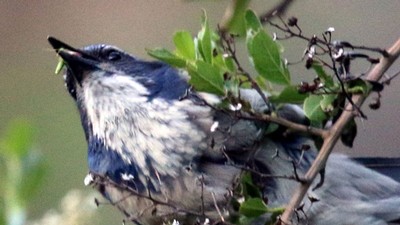A team of Utah State University chemists, led by Professor Alex Boldyrev, is at the forefront of a discussion that’s causing the scientific community to rethink long-held ideas about the nature of inorganic compounds. In the process, Boldyrev is priming his student team members for challenging and successful research careers.
“Dr. Boldyrev is absolutely passionate about science and training his students,” says Dmitry Zubarev, who recently earned his doctorate in chemistry from USU and is headed to a coveted postdoctoral position at the University of California-Berkeley. “For him, instilling independent thinking and scientific expertise in his students is as important as the research itself.”
Boldyrev, Zubarev and colleagues Boris Averkiev and Alina Sergeeva, both doctoral students in USU’s Department of Chemistry and Biochemistry, are investigating chemical bonding properties of metallic systems. The team asserts that characteristics believed to apply only to organic compounds can be extended to some metallic compounds. It’s an idea that, until recently, was thought to be impossible.
“Our studies make people argue with us constantly as we defend our point of view,” Zubarev says. “What we’re discovering about certain metals is unexpected.”
With colleagues at Washington State University and the Pacific Northwest National Laboratory, the USU researchers have published their findings in a number of academic journals including Physical Chemistry Chemical Physics, the American Chemical Society’s Journal of Physical Chemistry, Inorganic Chemistry, the Journal of Chemical Physics and the Journal of the American Chemical Society. Team members have also presented their findings at national and international conferences.
To understand the Aggie team’s research requires a brief history lesson. Since the 19th century, chemists have used the term “aromaticity” to describe the chemical bonding properties of organic compounds. The term is a bit misleading to the lay person, as the concept has little to do with the “aroma” associated with varied compounds.
In a nutshell, aromaticity refers to a chemical property in which atoms bond in rings to form stable organic compounds. By developing chemical-bonding models capable of explaining and predicting the structures of metallic clusters, the USU researchers are revealing that metals, too, exhibit aromaticity.
“It’s a big step,” Boldyrev says. “What we’re discovering is that metal systems have properties that allow them to bond in ways that mimic organic materials.”
Ascertaining the existence of this type of bonding is important, Boldyrev says, as it could improve scientists’ understanding of the nature of catalytic activity and lead to the design of new catalysts.
“The development of chemical bonding models that display this process could have a significant impact on rational design of nanocatalysts, nanomaterials with tailored properties, nano-scale electronic devices and more,” he says. “That’s our goal.”
Beyond his scientific aims, Boldyrev is mentoring a new generation of scientists confidently poised to tackle new levels of thought.
“The atmosphere you work in is one of the most important keys for success,” Sergeeva says. “Dr. Boldyrev inspires us to work hard every day. He’s a shining example of the professor I am eager to become one day.”
Averkiev says Boldyrev’s support and encouragement helped him publish more than nine papers in three years and afforded him the opportunity to present his research and make career-building contacts in academic forums throughout the country.
And his support goes beyond the lab, says Averkiev, a native of Moscow, Russia.
“Dr. Boldyrev met me at the Salt Lake airport when I first arrived in Utah and helped me get settled in my new home.”
“What I admire most about Dr. Boldyrev is that he treats our research team as if we were his own family,” Sergeeva says. “He’s concerned about us. He feels responsible for us. He stays in touch with former team members who have graduated to offer his support.”
Zubarev credits his professor with guiding and motivating him toward significant academic and research achievements during his years at Utah State. Zubarev was named USU’s 2008 Graduate Student Researcher of the Year; he says the award is recognition of Boldyrev’s mentoring talent and dedication.
“Dr. Boldyrev invested a lot of time in me,” he says. “If I ever happen to associate myself with a school of scientific thought, it will be the ‘School of Professor Boldyrev.’”
August 2008







